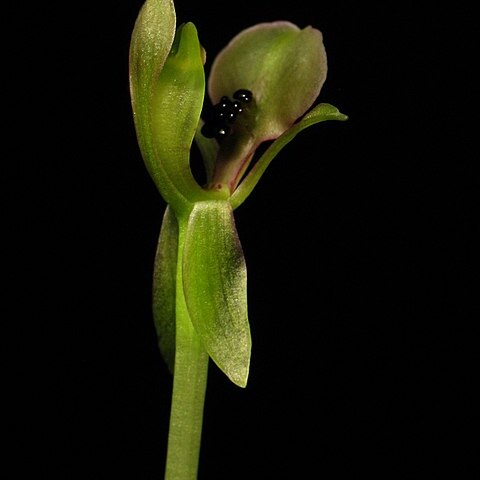A small orchid. It keeps growing from year to year but dies back in winter. It grows 8-12 cm high. There is one pair of leaves near the base. The leaves are oval to sword shaped. They are 5-8 cm long by 1.5-2.5 cm wide. There is a single flower on the end of the stem. The flowers are brownish green.

